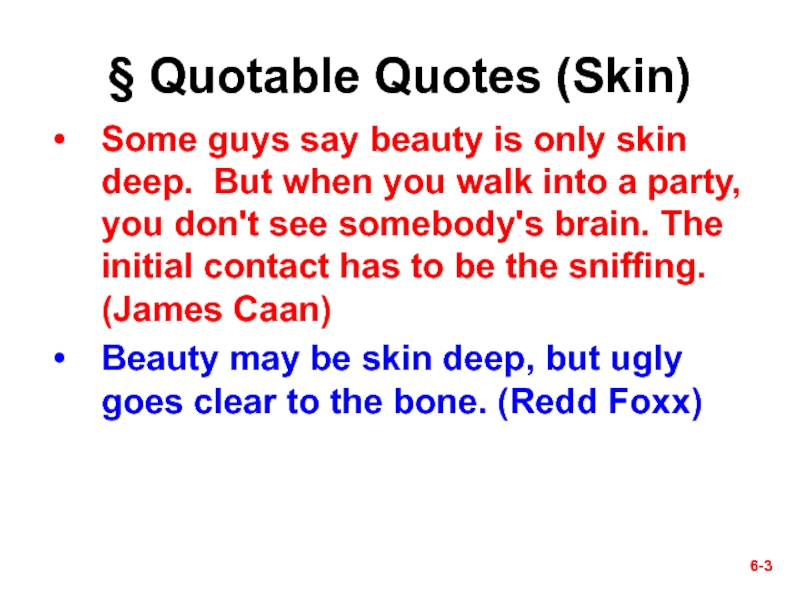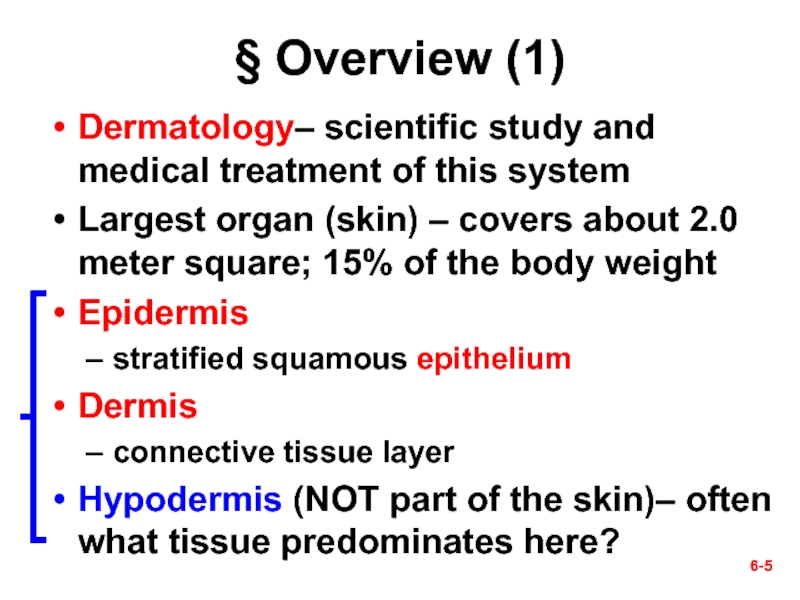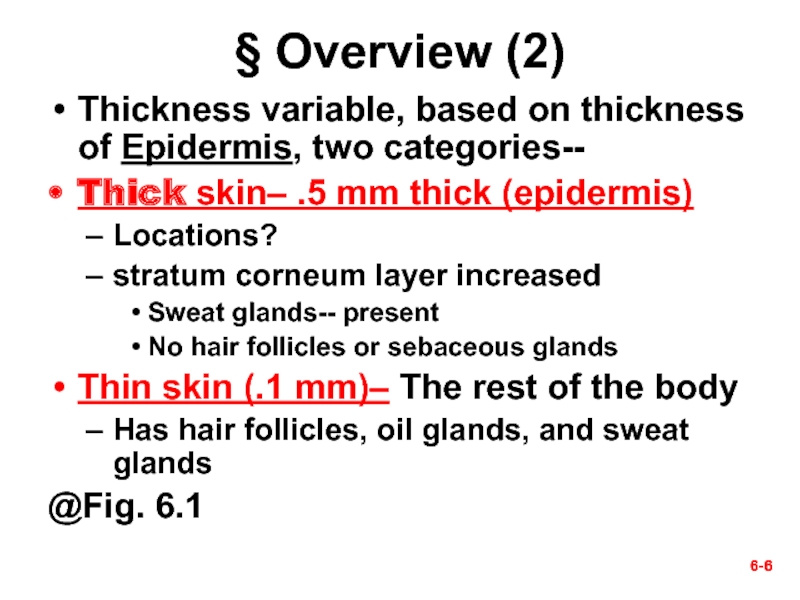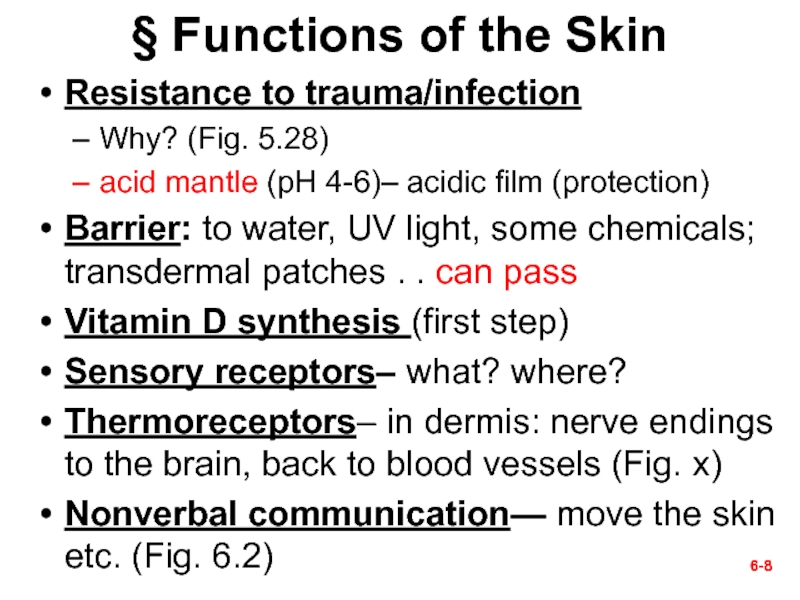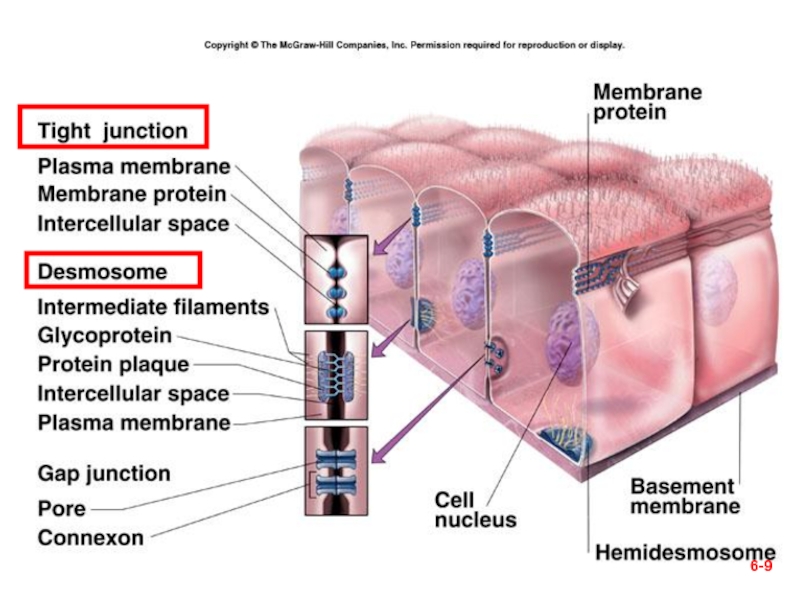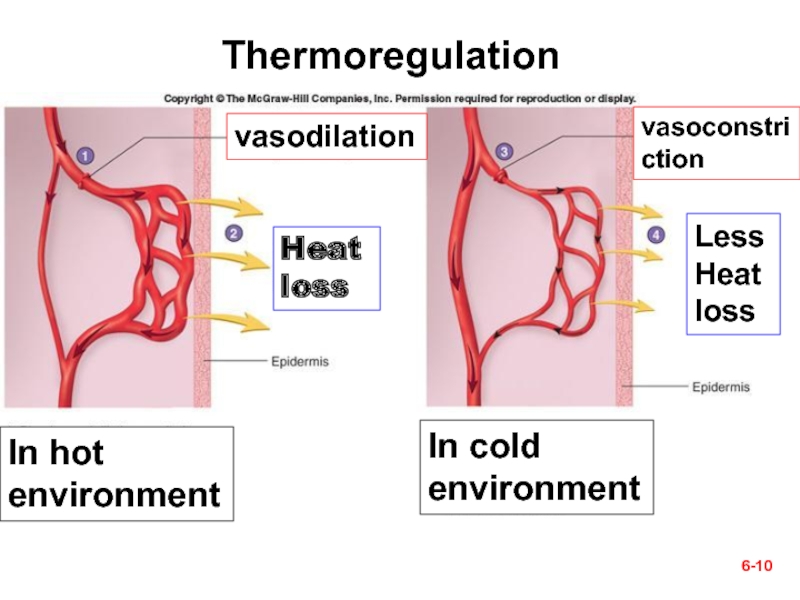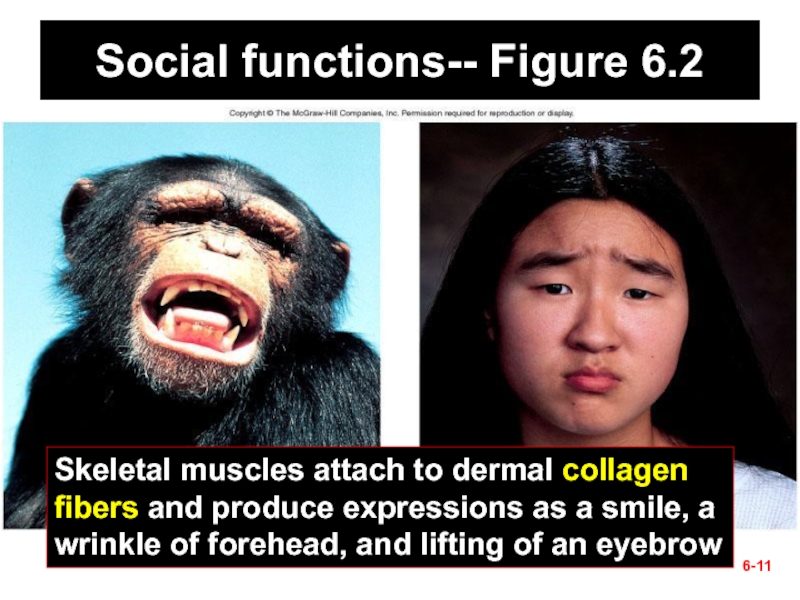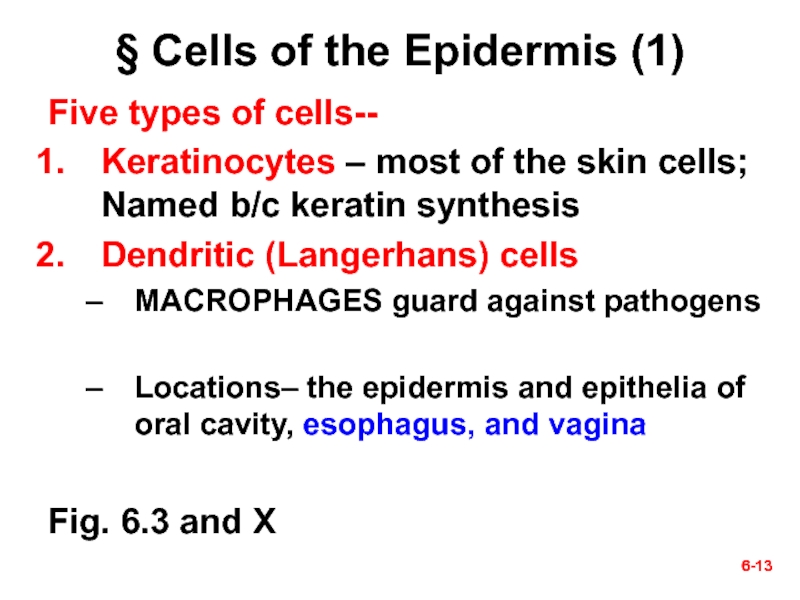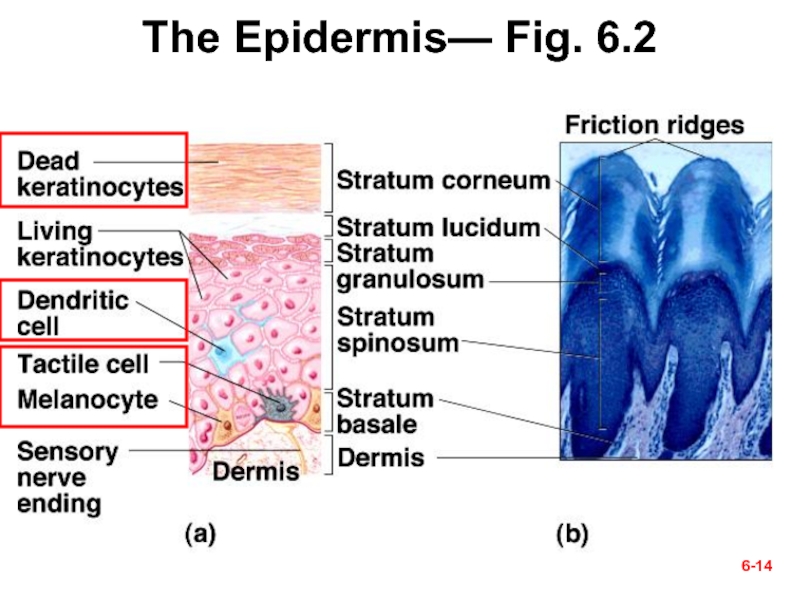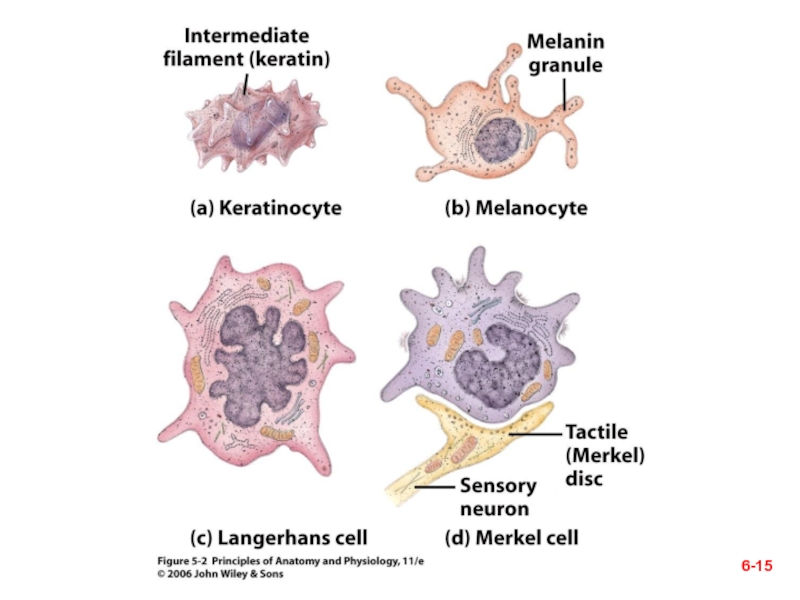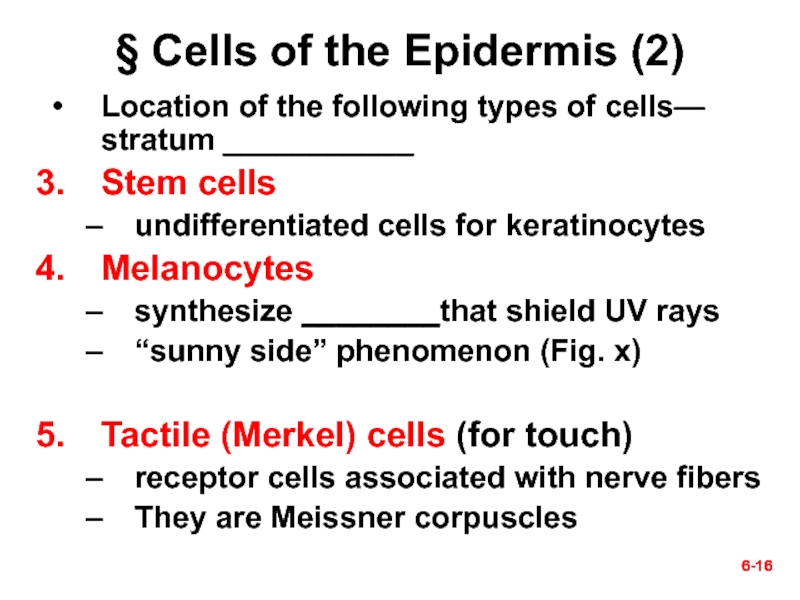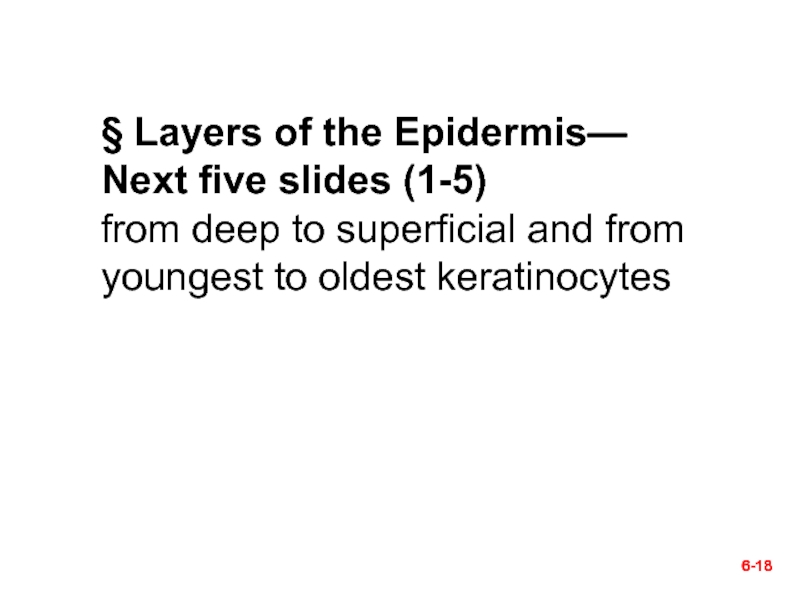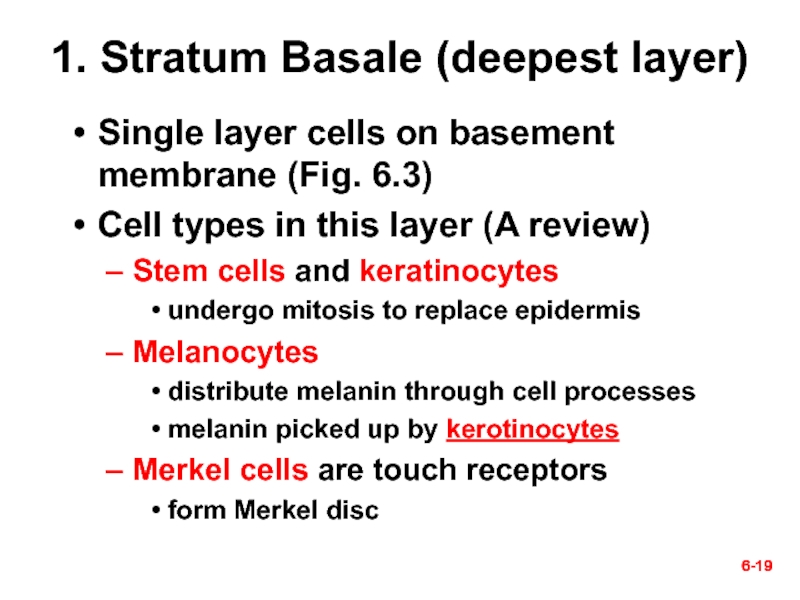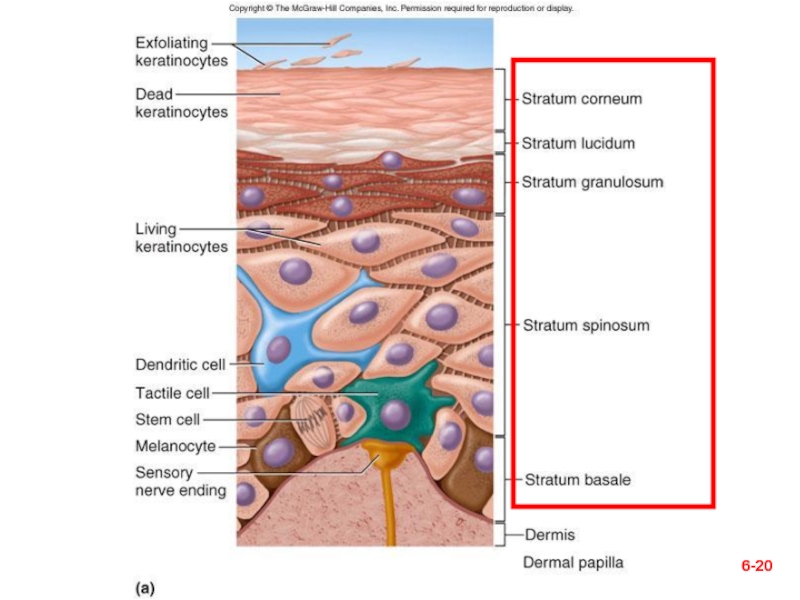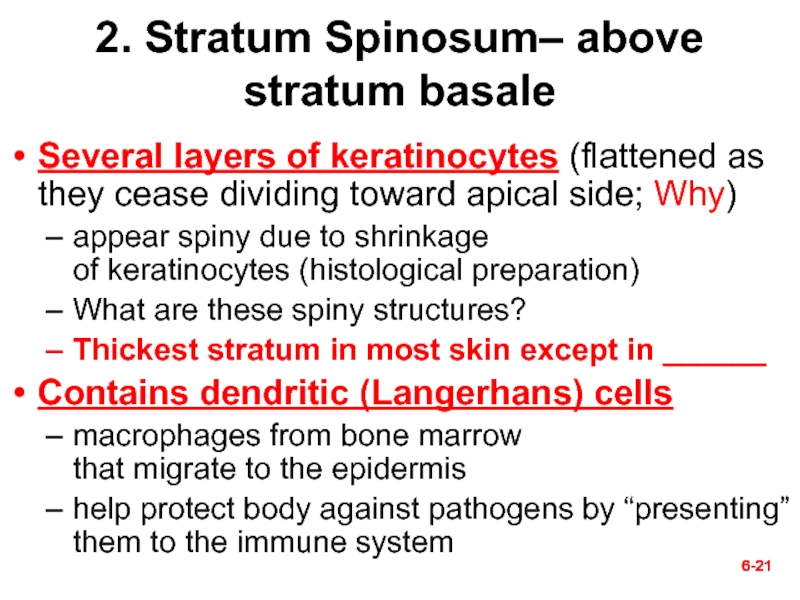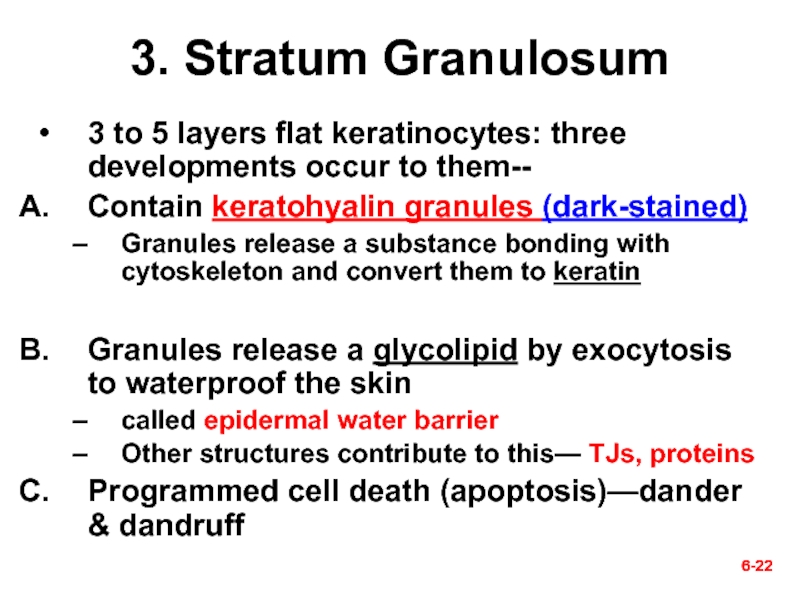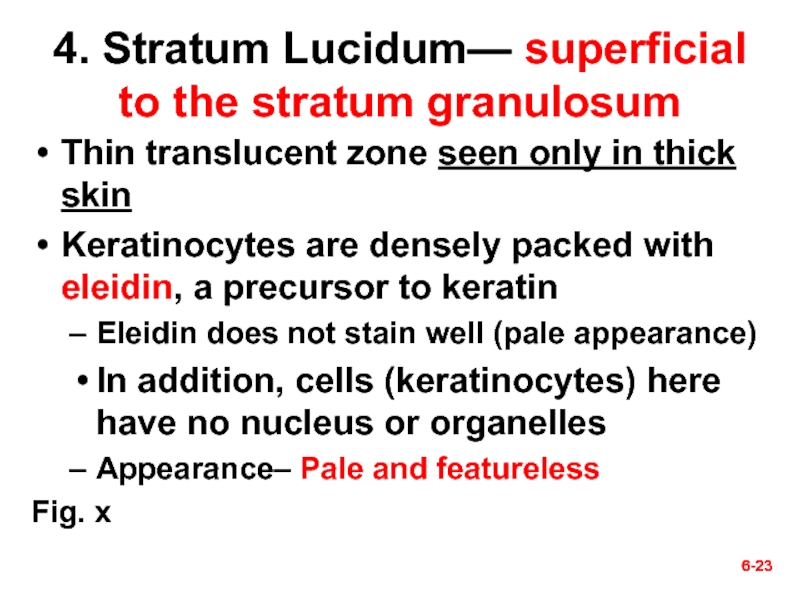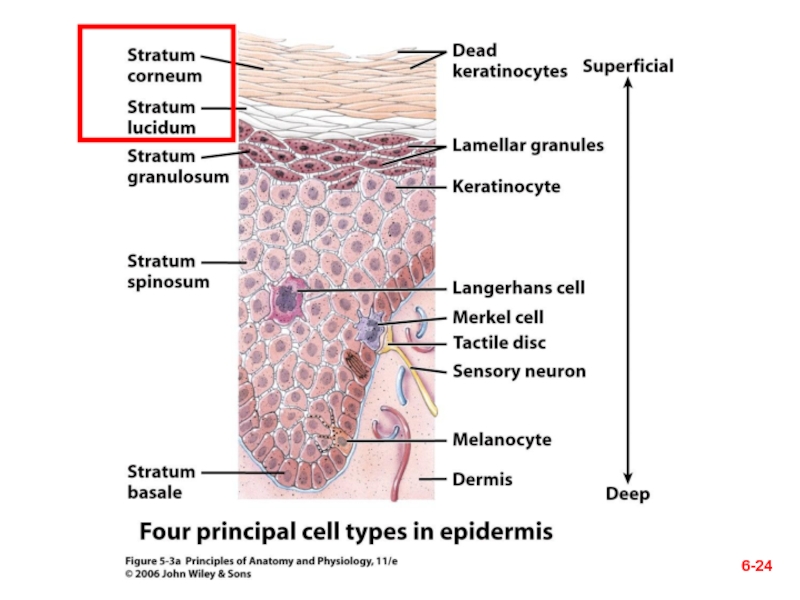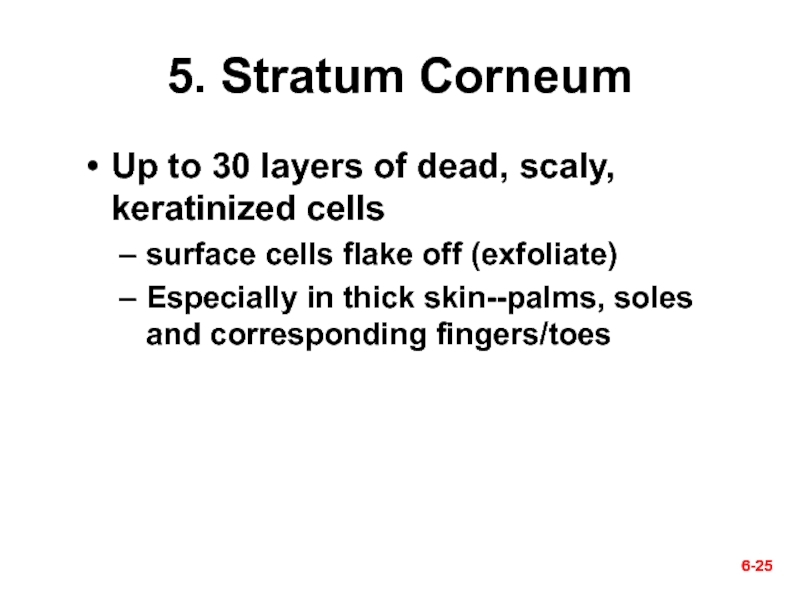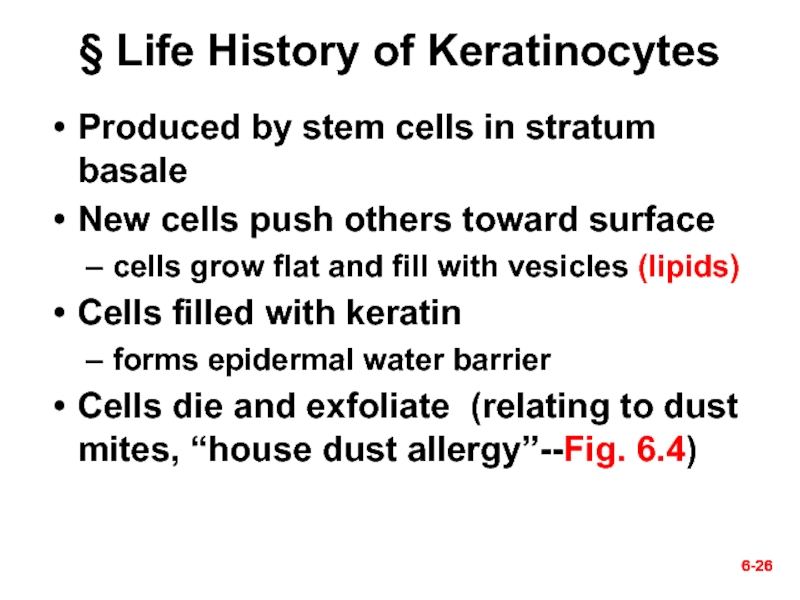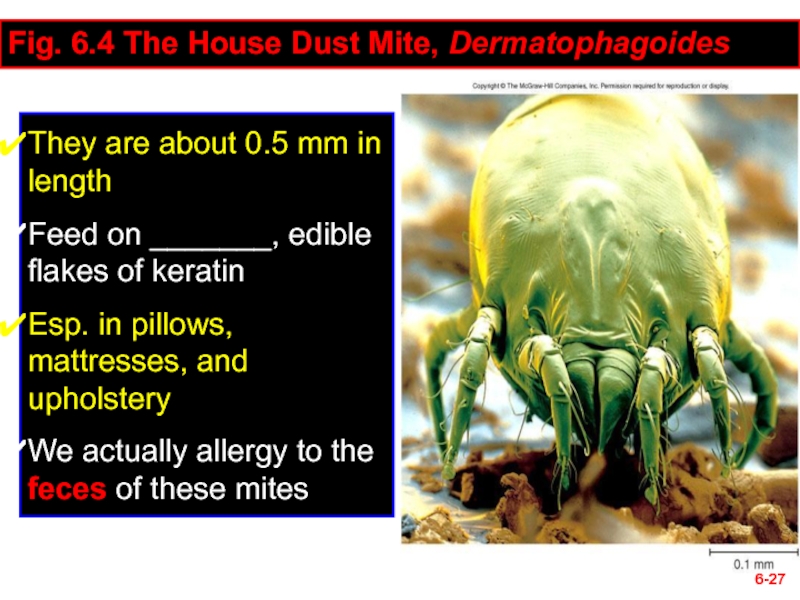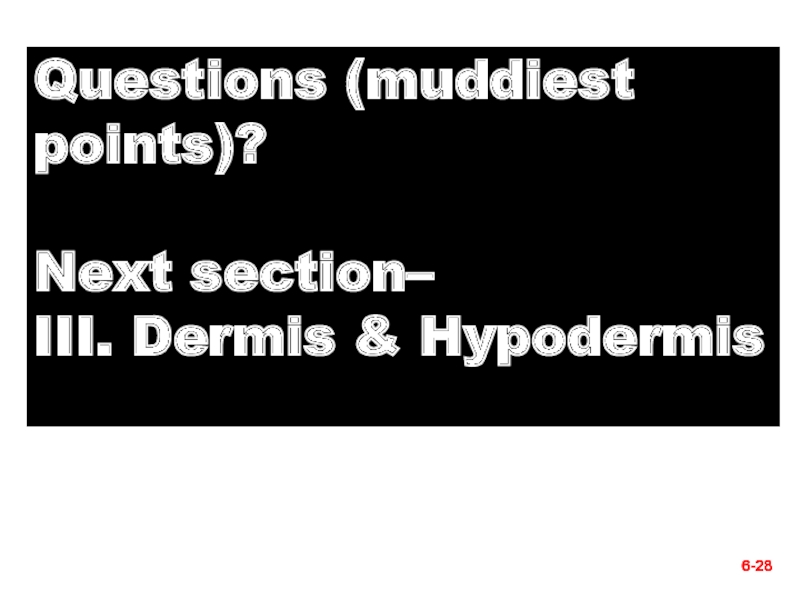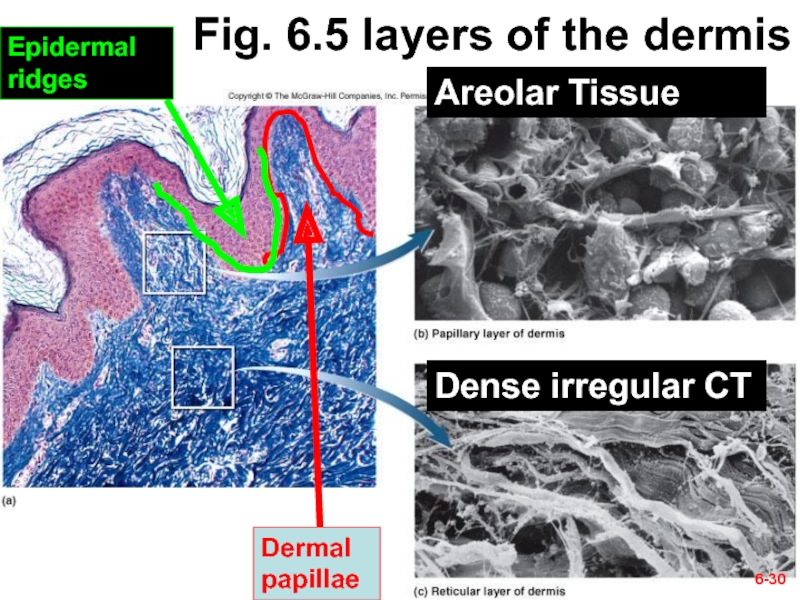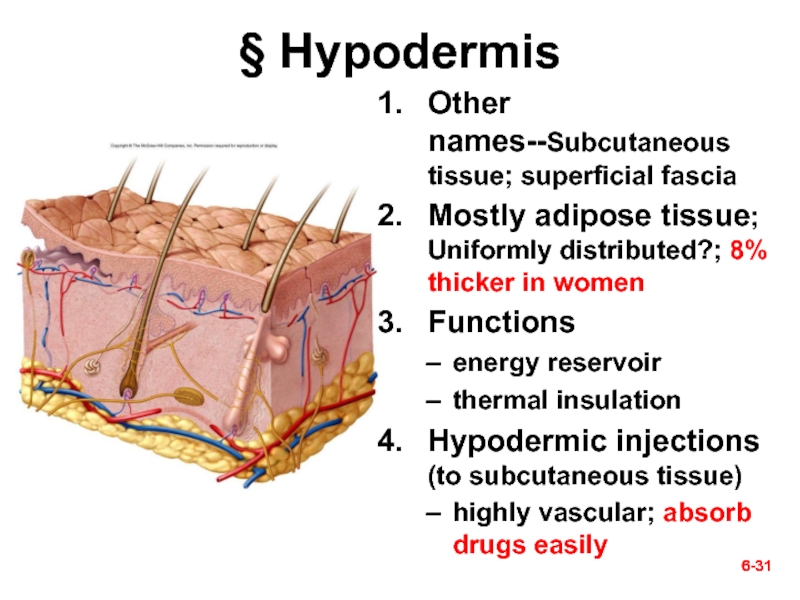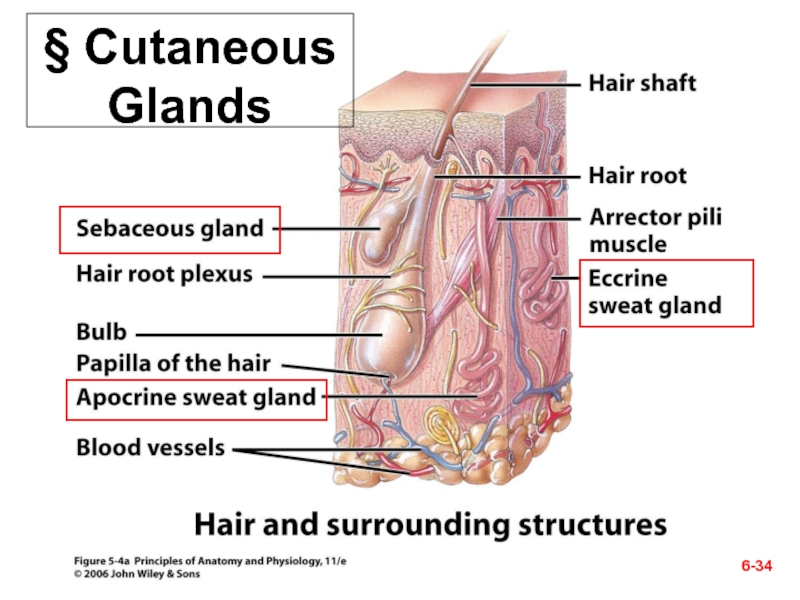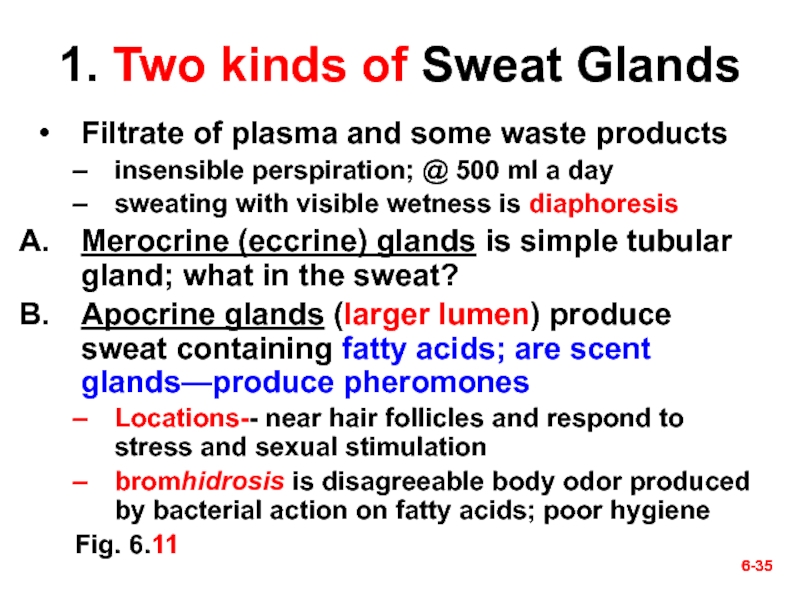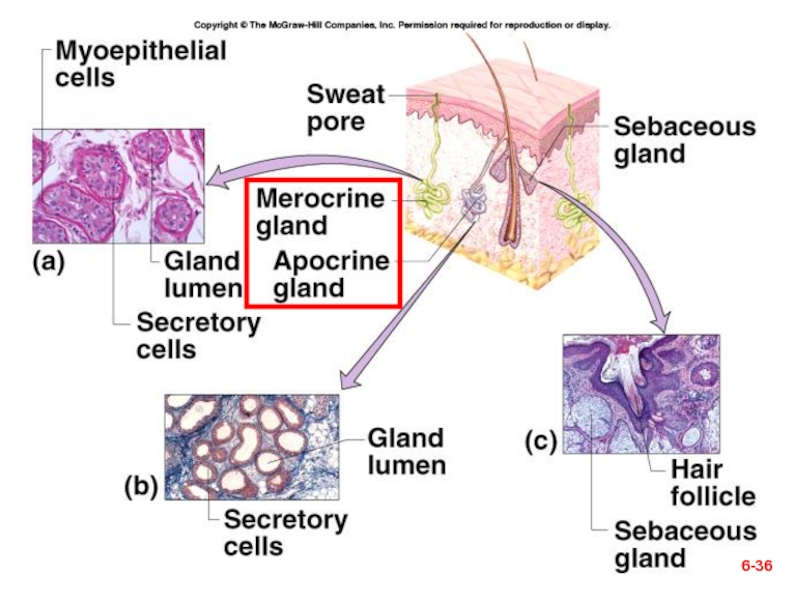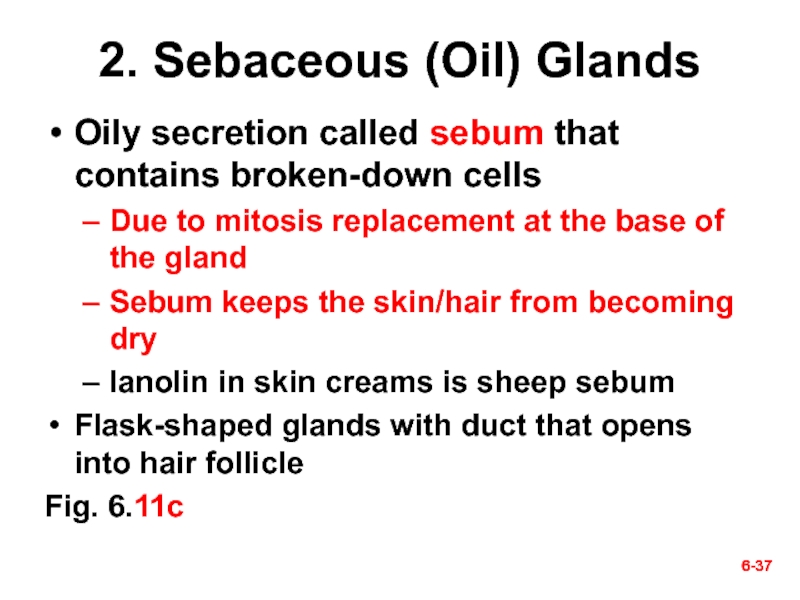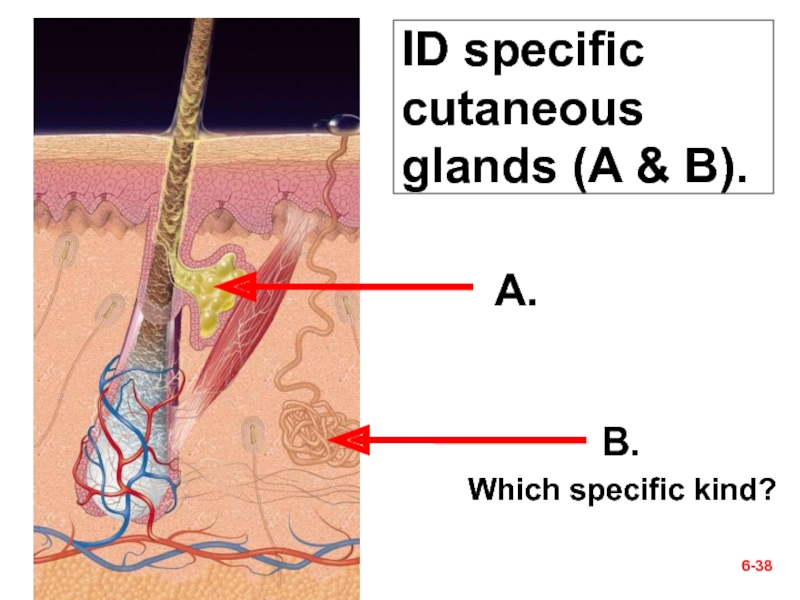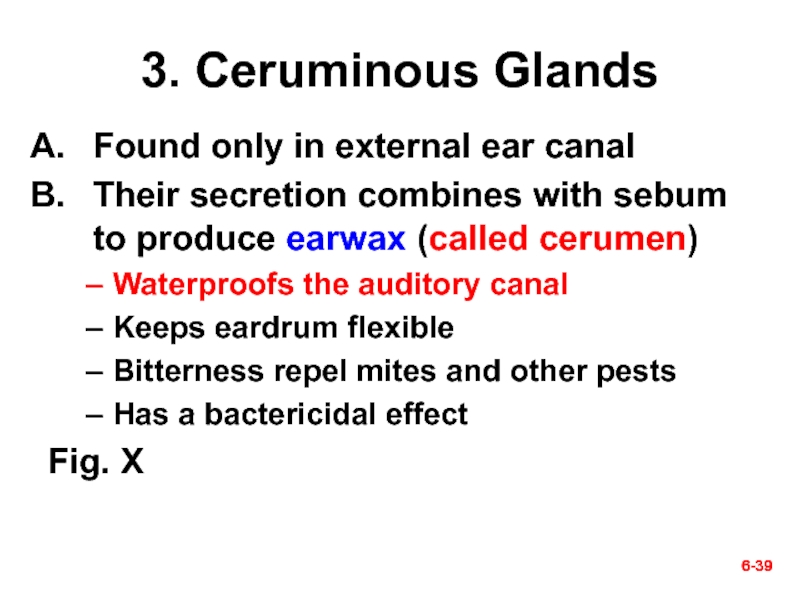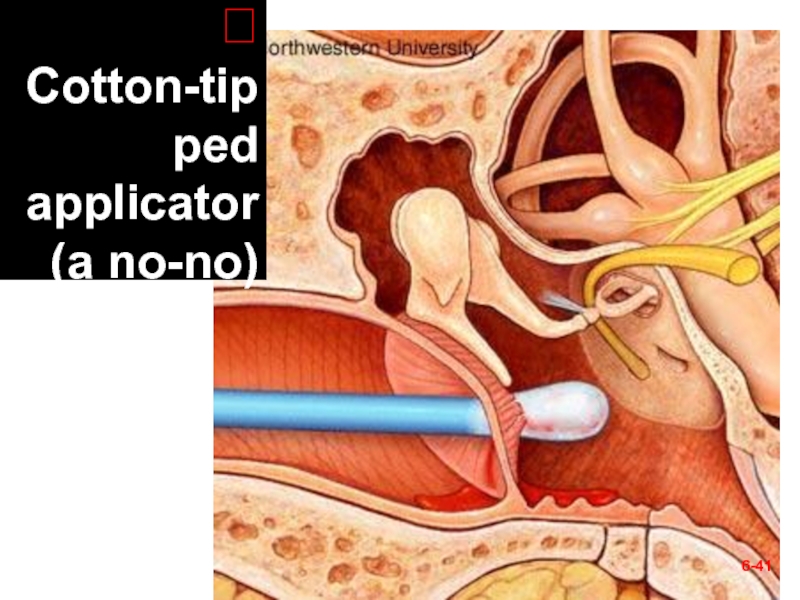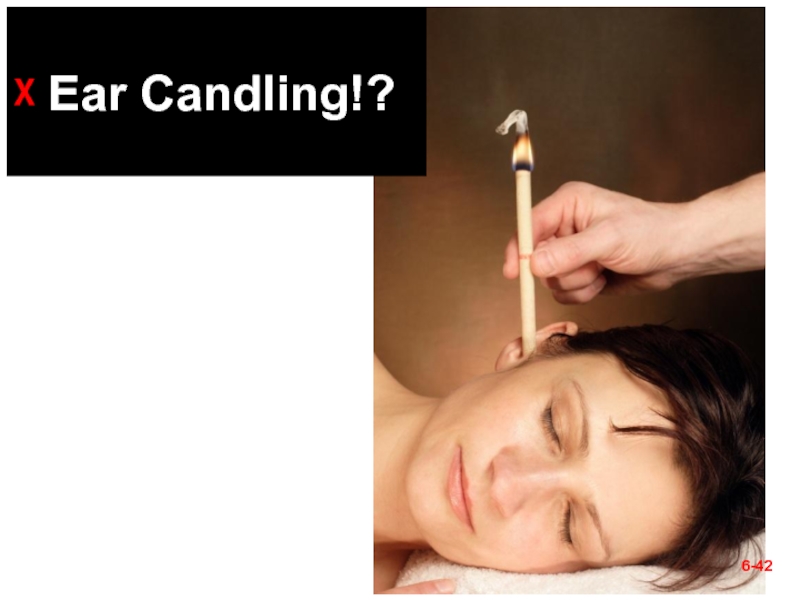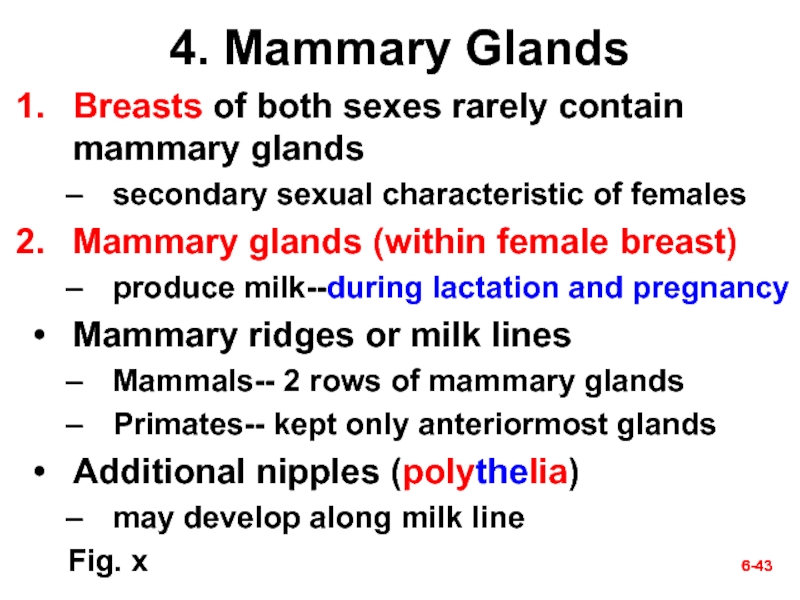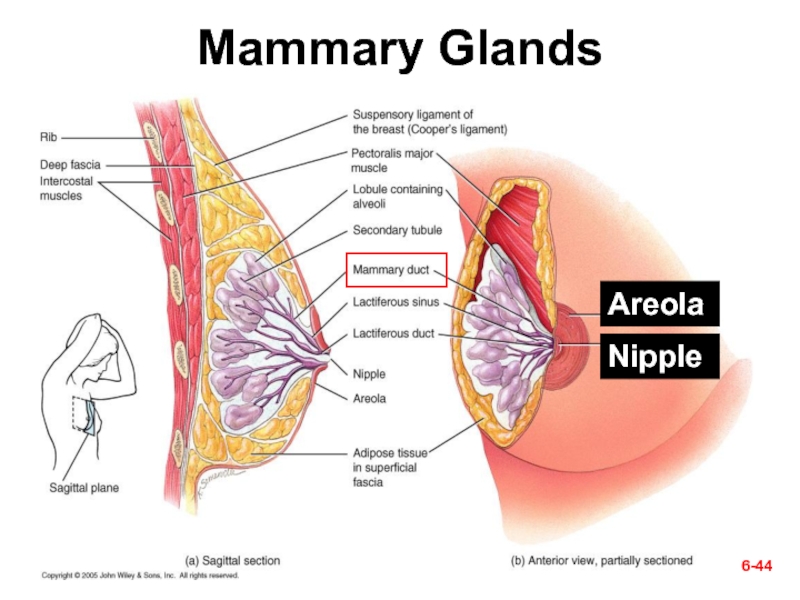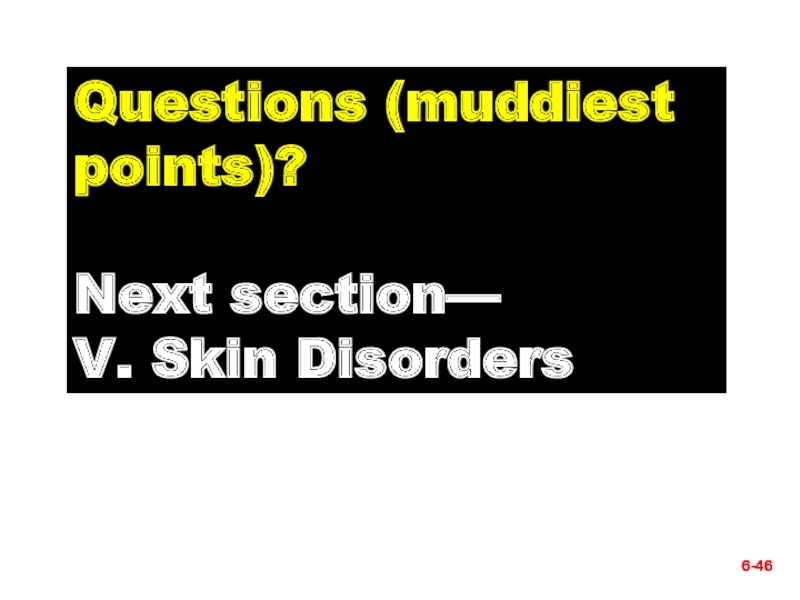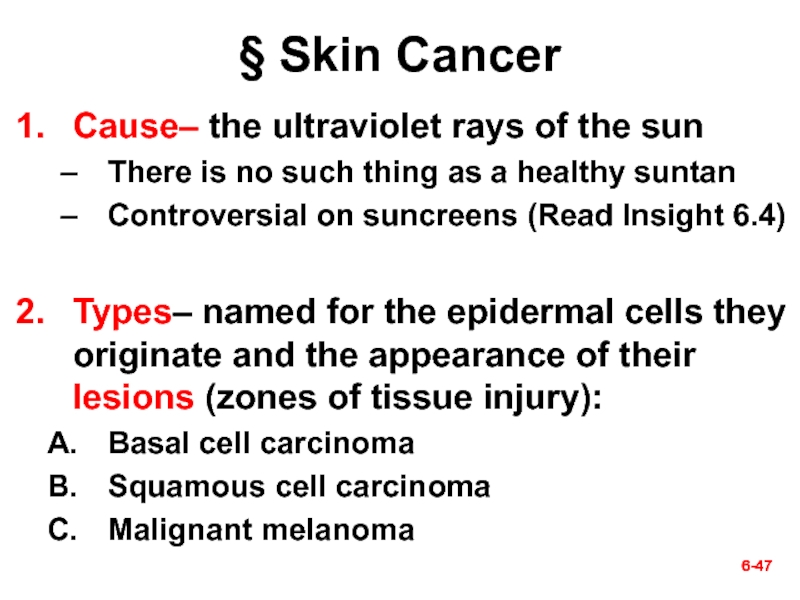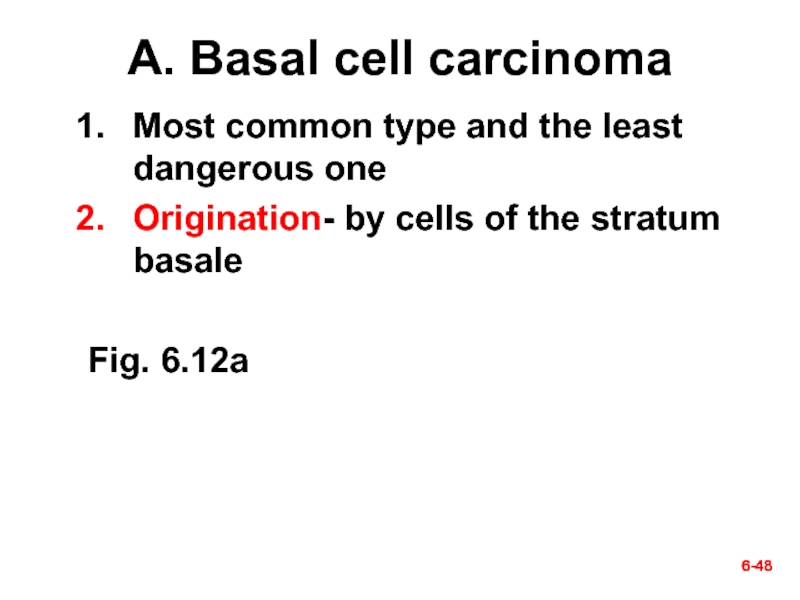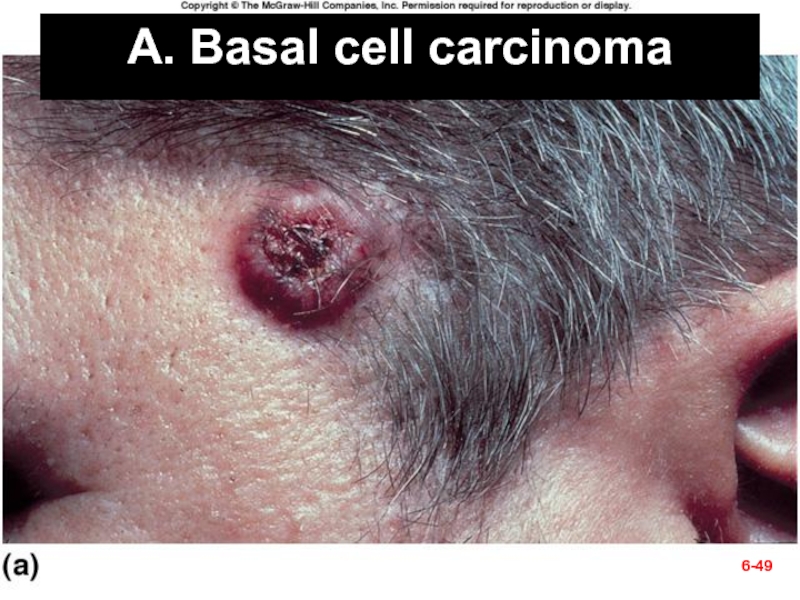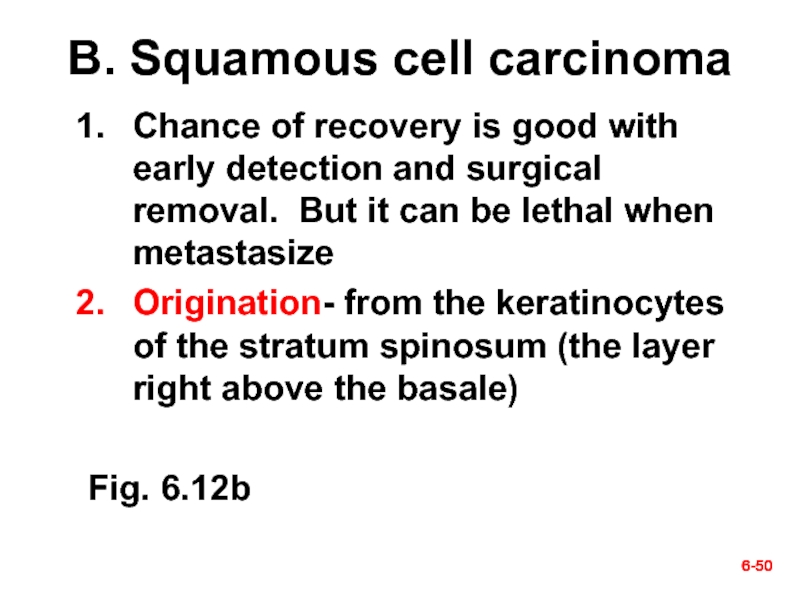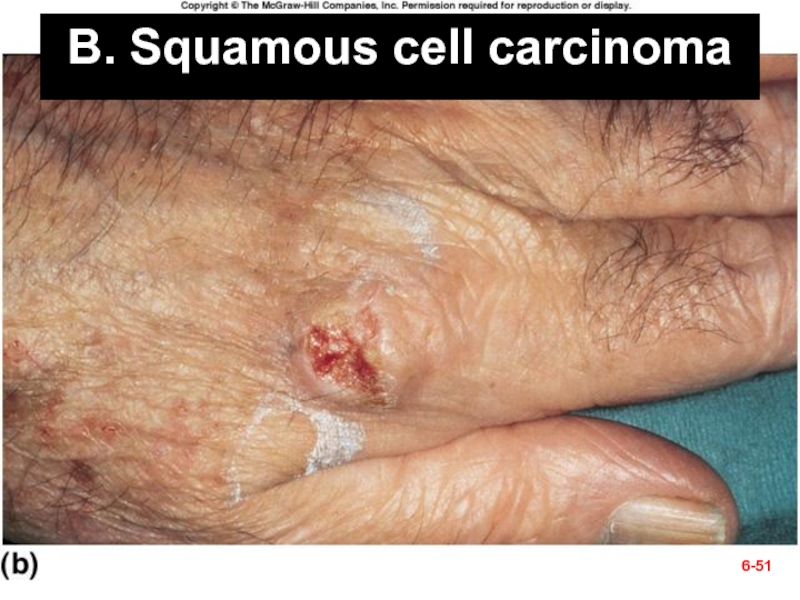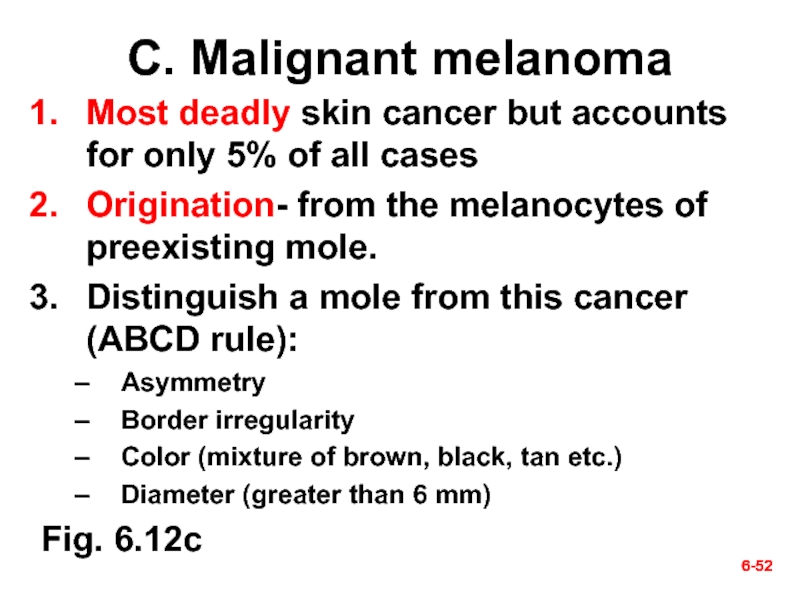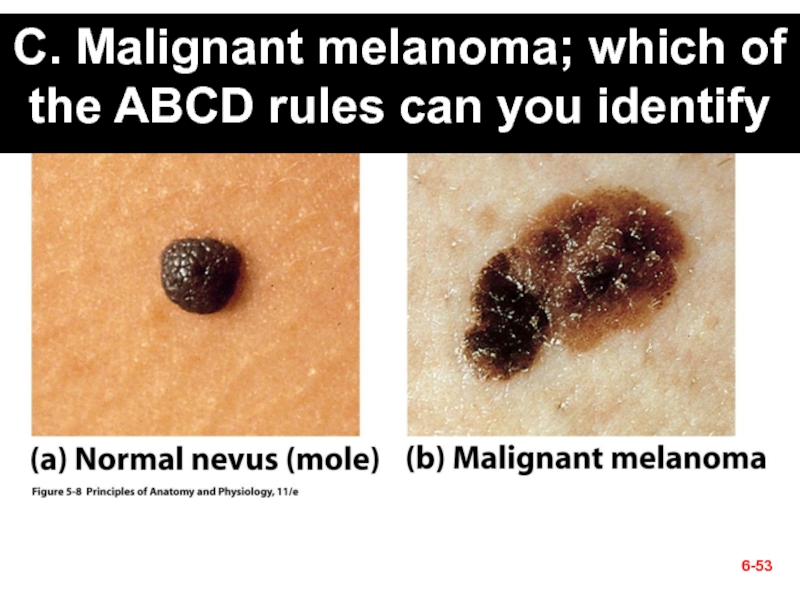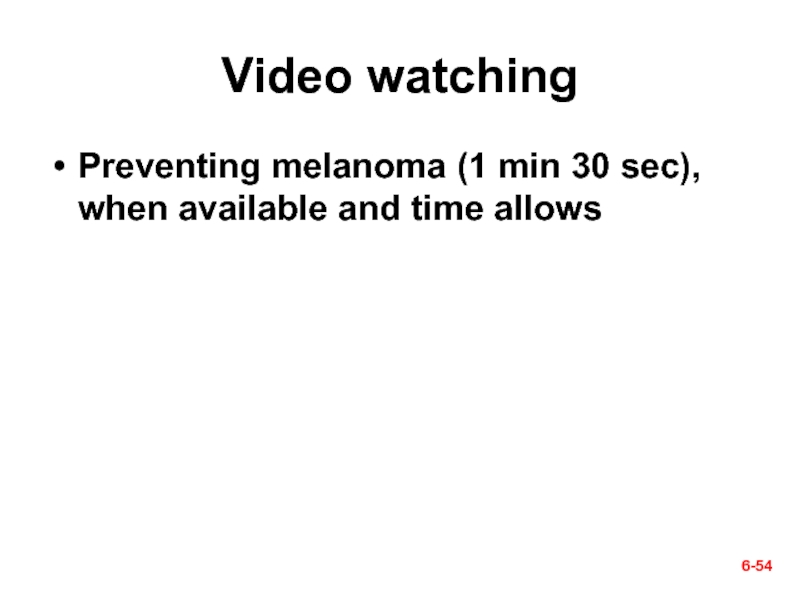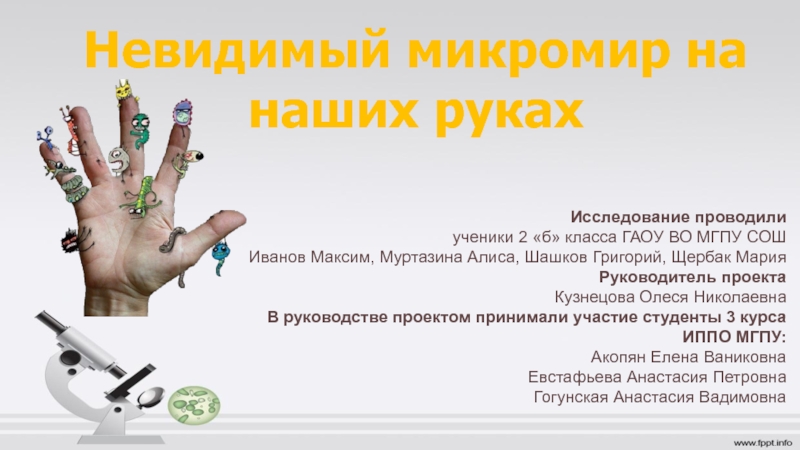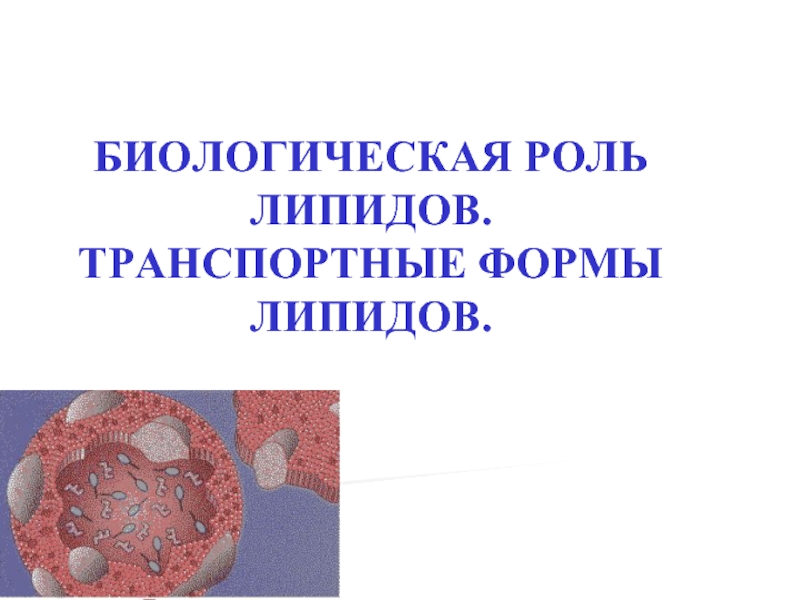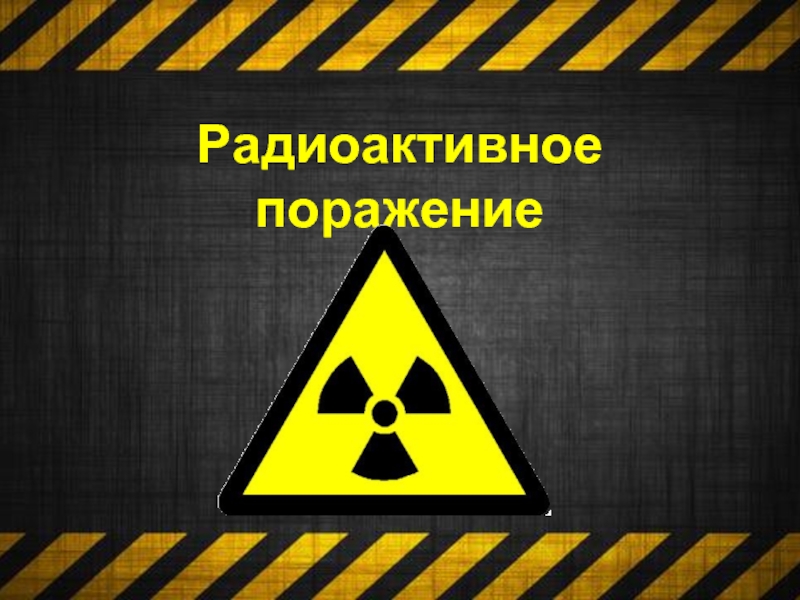- Главная
- Разное
- Дизайн
- Бизнес и предпринимательство
- Аналитика
- Образование
- Развлечения
- Красота и здоровье
- Финансы
- Государство
- Путешествия
- Спорт
- Недвижимость
- Армия
- Графика
- Культурология
- Еда и кулинария
- Лингвистика
- Английский язык
- Астрономия
- Алгебра
- Биология
- География
- Детские презентации
- Информатика
- История
- Литература
- Маркетинг
- Математика
- Медицина
- Менеджмент
- Музыка
- МХК
- Немецкий язык
- ОБЖ
- Обществознание
- Окружающий мир
- Педагогика
- Русский язык
- Технология
- Физика
- Философия
- Химия
- Шаблоны, картинки для презентаций
- Экология
- Экономика
- Юриспруденция
The integumentary system презентация
Содержание
- 1. The integumentary system
- 2. 6- Ch. 6 Study Guide
- 3. 6- § Quotable Quotes (Skin) Some guys
- 4. 6- I. Introduction 6-
- 5. 6- § Overview (1) Dermatology– scientific study
- 6. 6- 6- § Overview (2) Thickness variable,
- 7. 6-
- 8. 6- 6- § Functions of the Skin
- 9. 6-
- 10. In hot environment In cold environment 6- vasodilation vasoconstriction Heat loss Less Heat loss Thermoregulation
- 11. 6- Social functions-- Figure 6.2 Skeletal muscles
- 12. 6- II. Epidermis 6-
- 13. 6- 6- § Cells of the Epidermis
- 14. The Epidermis— Fig. 6.2 6-
- 15. 6-
- 16. 6- 6- § Cells of the Epidermis
- 17. 6- Melanocyte Keratinocytes
- 18. 6- § Layers of the Epidermis— Next
- 19. 6- 6- 1. Stratum Basale (deepest layer)
- 20. Figure 6.2a 6-
- 21. 6- 6- 2. Stratum Spinosum– above stratum
- 22. 6- 6- 3. Stratum Granulosum 3 to
- 23. 6- 6- 4. Stratum Lucidum— superficial to
- 24. 6-
- 25. 6- 6- 5. Stratum Corneum Up to
- 26. 6- 6- § Life History of Keratinocytes
- 27. 6- Fig. 6.4 The House Dust Mite,
- 28. 6- Questions (muddiest points)? Next section– III. Dermis & Hypodermis 6-
- 29. 6- 6- § Dermis- a C.T. layer
- 30. 6- Fig. 6.5 layers of the dermis
- 31. 6- 6- § Hypodermis Other names--Subcutaneous tissue;
- 32. 6- Questions? Next section— IV. Cutaneous Glands 6-
- 33. 6- Table 6.2— summary of cutaneous glands
- 34. § Cutaneous Glands 6-
- 35. 6- 6- 1. Two kinds of Sweat
- 36. 6-
- 37. 6- 6- 2. Sebaceous (Oil) Glands Oily
- 38. ID specific cutaneous glands (A & B). 6- A. B. Which specific kind?
- 39. 6- 6- 3. Ceruminous Glands Found only
- 40. 6- Ceruminous glands—inappropriate interventions
- 41. 6- ? Cotton-tipped applicator (a no-no)
- 42. 6- ᵡ Ear Candling!?
- 43. 6- 6- 4. Mammary Glands Breasts of
- 44. Mammary Glands 6- Areola Nipple
- 45. Check Point Questions (True/False) The three layers
- 46. 6- Questions (muddiest points)? Next section— V. Skin Disorders 6-
- 47. 6- 6- § Skin Cancer Cause– the
- 48. 6- 6- A. Basal cell carcinoma Most
- 49. Fig. 6.12a A. Basal cell carcinoma 6-
- 50. 6- 6- B. Squamous cell carcinoma Chance
- 51. B. Squamous cell carcinoma 6-
- 52. 6- 6- C. Malignant melanoma Most deadly
- 53. C. Malignant melanoma; which of the ABCD rules can you identify 6-
- 54. Video watching Preventing melanoma (1 min 30 sec), when available and time allows 6-
Слайд 26-
Ch. 6 Study Guide
Critically read Chapter 6–
pp. 187-194 before
“Skin Color” section
Skip Section 6.2 (Hair and Nails)
Critically read sections 6.3 (Cutaneous glands) and 6.4 (Skin Disorders) pp. 202-207 before “Burns” section
Comprehend Terminology (those in bold in the textbook) within the reading scope above
Study-- Figure questions, Think About It questions, and Before You Go On (section-ending) questions (within the reading scope above)
Do end-of-chapter questions--s
Testing Your Recall— 1-4, 7-17, 20
True or False– All of them (1-10)
Testing Your Comprehension-- 1, 4, 5
Skip Section 6.2 (Hair and Nails)
Critically read sections 6.3 (Cutaneous glands) and 6.4 (Skin Disorders) pp. 202-207 before “Burns” section
Comprehend Terminology (those in bold in the textbook) within the reading scope above
Study-- Figure questions, Think About It questions, and Before You Go On (section-ending) questions (within the reading scope above)
Do end-of-chapter questions--s
Testing Your Recall— 1-4, 7-17, 20
True or False– All of them (1-10)
Testing Your Comprehension-- 1, 4, 5
Слайд 36-
§ Quotable Quotes (Skin)
Some guys say beauty is only skin deep.
But when you walk into a party, you don't see somebody's brain. The initial contact has to be the sniffing. (James Caan)
Beauty may be skin deep, but ugly goes clear to the bone. (Redd Foxx)
Beauty may be skin deep, but ugly goes clear to the bone. (Redd Foxx)
6-
Слайд 56-
§ Overview (1)
Dermatology– scientific study and medical treatment of this system
Largest
organ (skin) – covers about 2.0 meter square; 15% of the body weight
Epidermis
stratified squamous epithelium
Dermis
connective tissue layer
Hypodermis (NOT part of the skin)– often what tissue predominates here?
Epidermis
stratified squamous epithelium
Dermis
connective tissue layer
Hypodermis (NOT part of the skin)– often what tissue predominates here?
6-
Слайд 66-
6-
§ Overview (2)
Thickness variable, based on thickness of Epidermis, two categories--
Thick
skin– .5 mm thick (epidermis)
Locations?
stratum corneum layer increased
Sweat glands-- present
No hair follicles or sebaceous glands
Thin skin (.1 mm)– The rest of the body
Has hair follicles, oil glands, and sweat glands
@Fig. 6.1
Locations?
stratum corneum layer increased
Sweat glands-- present
No hair follicles or sebaceous glands
Thin skin (.1 mm)– The rest of the body
Has hair follicles, oil glands, and sweat glands
@Fig. 6.1
Слайд 86-
6-
§ Functions of the Skin
Resistance to trauma/infection
Why? (Fig. 5.28)
acid mantle (pH
4-6)– acidic film (protection)
Barrier: to water, UV light, some chemicals; transdermal patches . . can pass
Vitamin D synthesis (first step)
Sensory receptors– what? where?
Thermoreceptors– in dermis: nerve endings to the brain, back to blood vessels (Fig. x)
Nonverbal communication— move the skin etc. (Fig. 6.2)
Barrier: to water, UV light, some chemicals; transdermal patches . . can pass
Vitamin D synthesis (first step)
Sensory receptors– what? where?
Thermoreceptors– in dermis: nerve endings to the brain, back to blood vessels (Fig. x)
Nonverbal communication— move the skin etc. (Fig. 6.2)
Слайд 10In hot environment
In cold environment
6-
vasodilation
vasoconstriction
Heat loss
Less
Heat loss
Thermoregulation
Слайд 116-
Social functions-- Figure 6.2
Skeletal muscles attach to dermal collagen fibers and
produce expressions as a smile, a wrinkle of forehead, and lifting of an eyebrow
Слайд 136-
6-
§ Cells of the Epidermis (1)
Five types of cells--
Keratinocytes – most
of the skin cells; Named b/c keratin synthesis
Dendritic (Langerhans) cells
MACROPHAGES guard against pathogens
Locations– the epidermis and epithelia of oral cavity, esophagus, and vagina
Fig. 6.3 and X
Dendritic (Langerhans) cells
MACROPHAGES guard against pathogens
Locations– the epidermis and epithelia of oral cavity, esophagus, and vagina
Fig. 6.3 and X
Слайд 166-
6-
§ Cells of the Epidermis (2)
Location of the following types of
cells— stratum ___________
Stem cells
undifferentiated cells for keratinocytes
Melanocytes
synthesize ________that shield UV rays
“sunny side” phenomenon (Fig. x)
Tactile (Merkel) cells (for touch)
receptor cells associated with nerve fibers
They are Meissner corpuscles
Stem cells
undifferentiated cells for keratinocytes
Melanocytes
synthesize ________that shield UV rays
“sunny side” phenomenon (Fig. x)
Tactile (Merkel) cells (for touch)
receptor cells associated with nerve fibers
They are Meissner corpuscles
Слайд 186-
§ Layers of the Epidermis—
Next five slides (1-5)
from deep to superficial
and from youngest to oldest keratinocytes
6-
Слайд 196-
6-
1. Stratum Basale (deepest layer)
Single layer cells on basement membrane (Fig.
6.3)
Cell types in this layer (A review)
Stem cells and keratinocytes
undergo mitosis to replace epidermis
Melanocytes
distribute melanin through cell processes
melanin picked up by kerotinocytes
Merkel cells are touch receptors
form Merkel disc
Cell types in this layer (A review)
Stem cells and keratinocytes
undergo mitosis to replace epidermis
Melanocytes
distribute melanin through cell processes
melanin picked up by kerotinocytes
Merkel cells are touch receptors
form Merkel disc
Слайд 216-
6-
2. Stratum Spinosum– above stratum basale
Several layers of keratinocytes (flattened as
they cease dividing toward apical side; Why)
appear spiny due to shrinkage of keratinocytes (histological preparation)
What are these spiny structures?
Thickest stratum in most skin except in ______
Contains dendritic (Langerhans) cells
macrophages from bone marrow that migrate to the epidermis
help protect body against pathogens by “presenting” them to the immune system
appear spiny due to shrinkage of keratinocytes (histological preparation)
What are these spiny structures?
Thickest stratum in most skin except in ______
Contains dendritic (Langerhans) cells
macrophages from bone marrow that migrate to the epidermis
help protect body against pathogens by “presenting” them to the immune system
Слайд 226-
6-
3. Stratum Granulosum
3 to 5 layers flat keratinocytes: three developments occur
to them--
Contain keratohyalin granules (dark-stained)
Granules release a substance bonding with cytoskeleton and convert them to keratin
Granules release a glycolipid by exocytosis to waterproof the skin
called epidermal water barrier
Other structures contribute to this— TJs, proteins
Programmed cell death (apoptosis)—dander & dandruff
Contain keratohyalin granules (dark-stained)
Granules release a substance bonding with cytoskeleton and convert them to keratin
Granules release a glycolipid by exocytosis to waterproof the skin
called epidermal water barrier
Other structures contribute to this— TJs, proteins
Programmed cell death (apoptosis)—dander & dandruff
Слайд 236-
6-
4. Stratum Lucidum— superficial to the stratum granulosum
Thin translucent zone seen
only in thick skin
Keratinocytes are densely packed with eleidin, a precursor to keratin
Eleidin does not stain well (pale appearance)
In addition, cells (keratinocytes) here have no nucleus or organelles
Appearance– Pale and featureless
Fig. x
Keratinocytes are densely packed with eleidin, a precursor to keratin
Eleidin does not stain well (pale appearance)
In addition, cells (keratinocytes) here have no nucleus or organelles
Appearance– Pale and featureless
Fig. x
Слайд 256-
6-
5. Stratum Corneum
Up to 30 layers of dead, scaly,
keratinized cells
surface cells
flake off (exfoliate)
Especially in thick skin--palms, soles and corresponding fingers/toes
Especially in thick skin--palms, soles and corresponding fingers/toes
Слайд 266-
6-
§ Life History of Keratinocytes
Produced by stem cells in stratum basale
New
cells push others toward surface
cells grow flat and fill with vesicles (lipids)
Cells filled with keratin
forms epidermal water barrier
Cells die and exfoliate (relating to dust mites, “house dust allergy”--Fig. 6.4)
cells grow flat and fill with vesicles (lipids)
Cells filled with keratin
forms epidermal water barrier
Cells die and exfoliate (relating to dust mites, “house dust allergy”--Fig. 6.4)
Слайд 276-
Fig. 6.4 The House Dust Mite, Dermatophagoides
They are about 0.5 mm
in length
Feed on _______, edible flakes of keratin
Esp. in pillows, mattresses, and upholstery
We actually allergy to the feces of these mites
Feed on _______, edible flakes of keratin
Esp. in pillows, mattresses, and upholstery
We actually allergy to the feces of these mites
6-
Слайд 296-
6-
§ Dermis- a C.T. layer
Thickness = 0.2 to 4.0 mm
Composition
Collagen (mainly),
elastic and reticular fibers,
Cells– fibroblast etc. --Blood supply (yes/no)
Sweat glands, sebaceous glands, nerve endings
Dermal papillae – fingerlike extensions of the dermis into the epidermis
Layers (fig. 6.5) in dermis:
papillary layer, thin and rich in capillaries, areolar tissue
reticular layer, deeper part, Dense irregular C.T.; striae— stretch marks (tearing of collagens)
Cells– fibroblast etc. --Blood supply (yes/no)
Sweat glands, sebaceous glands, nerve endings
Dermal papillae – fingerlike extensions of the dermis into the epidermis
Layers (fig. 6.5) in dermis:
papillary layer, thin and rich in capillaries, areolar tissue
reticular layer, deeper part, Dense irregular C.T.; striae— stretch marks (tearing of collagens)
Слайд 306-
Fig. 6.5 layers of the dermis
Dermal papillae
Epidermal ridges
Areolar Tissue
Dense irregular CT
6-
Слайд 316-
6-
§ Hypodermis
Other names--Subcutaneous tissue; superficial fascia
Mostly adipose tissue; Uniformly distributed?; 8%
thicker in women
Functions
energy reservoir
thermal insulation
Hypodermic injections (to subcutaneous tissue)
highly vascular; absorb drugs easily
Functions
energy reservoir
thermal insulation
Hypodermic injections (to subcutaneous tissue)
highly vascular; absorb drugs easily
Слайд 336-
Table 6.2— summary of cutaneous glands
1. Sweat glands
2. Oil glands
3. Ceruminous
glands
4. Mammary glands
6-
Слайд 356-
6-
1. Two kinds of Sweat Glands
Filtrate of plasma and some waste
products
insensible perspiration; @ 500 ml a day
sweating with visible wetness is diaphoresis
Merocrine (eccrine) glands is simple tubular gland; what in the sweat?
Apocrine glands (larger lumen) produce sweat containing fatty acids; are scent glands—produce pheromones
Locations-- near hair follicles and respond to stress and sexual stimulation
bromhidrosis is disagreeable body odor produced by bacterial action on fatty acids; poor hygiene
Fig. 6.11
insensible perspiration; @ 500 ml a day
sweating with visible wetness is diaphoresis
Merocrine (eccrine) glands is simple tubular gland; what in the sweat?
Apocrine glands (larger lumen) produce sweat containing fatty acids; are scent glands—produce pheromones
Locations-- near hair follicles and respond to stress and sexual stimulation
bromhidrosis is disagreeable body odor produced by bacterial action on fatty acids; poor hygiene
Fig. 6.11
Слайд 376-
6-
2. Sebaceous (Oil) Glands
Oily secretion called sebum that contains broken-down cells
Due
to mitosis replacement at the base of the gland
Sebum keeps the skin/hair from becoming dry
lanolin in skin creams is sheep sebum
Flask-shaped glands with duct that opens into hair follicle
Fig. 6.11c
Sebum keeps the skin/hair from becoming dry
lanolin in skin creams is sheep sebum
Flask-shaped glands with duct that opens into hair follicle
Fig. 6.11c
Слайд 396-
6-
3. Ceruminous Glands
Found only in external ear canal
Their secretion combines with
sebum to produce earwax (called cerumen)
Waterproofs the auditory canal
Keeps eardrum flexible
Bitterness repel mites and other pests
Has a bactericidal effect
Fig. X
Waterproofs the auditory canal
Keeps eardrum flexible
Bitterness repel mites and other pests
Has a bactericidal effect
Fig. X
Слайд 436-
6-
4. Mammary Glands
Breasts of both sexes rarely contain mammary glands
secondary sexual
characteristic of females
Mammary glands (within female breast)
produce milk--during lactation and pregnancy
Mammary ridges or milk lines
Mammals-- 2 rows of mammary glands
Primates-- kept only anteriormost glands
Additional nipples (polythelia)
may develop along milk line
Fig. x
Mammary glands (within female breast)
produce milk--during lactation and pregnancy
Mammary ridges or milk lines
Mammals-- 2 rows of mammary glands
Primates-- kept only anteriormost glands
Additional nipples (polythelia)
may develop along milk line
Fig. x
Слайд 45Check Point Questions
(True/False) The three layers of the skin are the
epidermis, dermis, and hypodermis.
How do merocrine and apocrine sweat glands differ in structure and function?
How do merocrine and apocrine sweat glands differ in structure and function?
6-
6-
Слайд 476-
6-
§ Skin Cancer
Cause– the ultraviolet rays of the sun
There is
no such thing as a healthy suntan
Controversial on suncreens (Read Insight 6.4)
Types– named for the epidermal cells they originate and the appearance of their lesions (zones of tissue injury):
Basal cell carcinoma
Squamous cell carcinoma
Malignant melanoma
Controversial on suncreens (Read Insight 6.4)
Types– named for the epidermal cells they originate and the appearance of their lesions (zones of tissue injury):
Basal cell carcinoma
Squamous cell carcinoma
Malignant melanoma
Слайд 486-
6-
A. Basal cell carcinoma
Most common type and the least dangerous one
Origination-
by cells of the stratum basale
Fig. 6.12a
Fig. 6.12a
Слайд 506-
6-
B. Squamous cell carcinoma
Chance of recovery is good with early detection
and surgical removal. But it can be lethal when metastasize
Origination- from the keratinocytes of the stratum spinosum (the layer right above the basale)
Fig. 6.12b
Origination- from the keratinocytes of the stratum spinosum (the layer right above the basale)
Fig. 6.12b
Слайд 526-
6-
C. Malignant melanoma
Most deadly skin cancer but accounts for only 5%
of all cases
Origination- from the melanocytes of preexisting mole.
Distinguish a mole from this cancer (ABCD rule):
Asymmetry
Border irregularity
Color (mixture of brown, black, tan etc.)
Diameter (greater than 6 mm)
Fig. 6.12c
Origination- from the melanocytes of preexisting mole.
Distinguish a mole from this cancer (ABCD rule):
Asymmetry
Border irregularity
Color (mixture of brown, black, tan etc.)
Diameter (greater than 6 mm)
Fig. 6.12c


